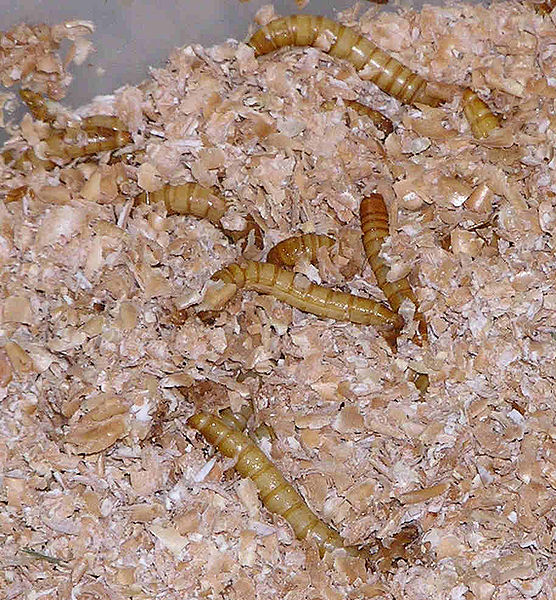 The mealworm has long been valued by pet keepers, but medical researchers are now giving it some respect as well. A recent (December, 2008) article in the journal Science reveals that antimicrobial peptides manufactured by the mealworm beetle destroy any bacteria that happen to survive the original onslaught launched by the beetle’s immune system.
The mealworm has long been valued by pet keepers, but medical researchers are now giving it some respect as well. A recent (December, 2008) article in the journal Science reveals that antimicrobial peptides manufactured by the mealworm beetle destroy any bacteria that happen to survive the original onslaught launched by the beetle’s immune system.
This is important because bacteria and other microbes that are not killed by drugs or immune system defenses often evolve into resistant strains, which are then very difficult to control. This is currently a very serious human health concern, especially as regards hospital-based micro-organisms.
It seems that insects are particularly effective at preventing the development of hard-to-kill microbes, and that most of the credit for this is due a unique group of chemicals known as antimicrobial peptides. It is hoped that human medications modeled after these peptides may serve to limit the emergence of dangerous drug-resistant bacteria, fungi and other microbes.
Mealworms have a long history as important laboratory animals. You can learn more by checking the forum at the following location:
http://tenebrionidae.net/forum/.
Please also see my article on the proper use of mealworms as a pet food: Making the Most of the Mealworm: some tips on enhancing the nutritional value of this pet trade staple
Image referenced from Wikipedia and originally posted by http://www.entomart.be/
 That Reptile Blog – Reptile, Amphibian and Exotic Pet Care and Information
That Reptile Blog – Reptile, Amphibian and Exotic Pet Care and Information

 A steady diet of mealworms (I refer here to the small mealworm, Tenebrio molitor, not the giant mealworm, Zophobus mario) is not recommended for any reptile or amphibian. These beetle larvae lack essential nutrients, the calcium: phosphorus ratio is not ideal and the exoskeleton is high in chitin. Mealworms also have quite strong jaws, and may injure debilitated or small reptiles and amphibians.
A steady diet of mealworms (I refer here to the small mealworm, Tenebrio molitor, not the giant mealworm, Zophobus mario) is not recommended for any reptile or amphibian. These beetle larvae lack essential nutrients, the calcium: phosphorus ratio is not ideal and the exoskeleton is high in chitin. Mealworms also have quite strong jaws, and may injure debilitated or small reptiles and amphibians.